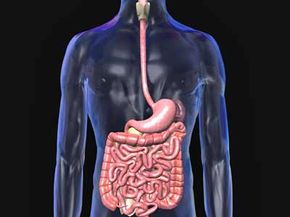Your stomach, if you want to be technical about it, is a "crescent-shaped hollow organ" about the size of a large melon. The average adult stomach holds about three quarts (three liters) of fluid. Your stomach is made up of a variety of layers, including:
- The serosa - the outer layer that acts as a covering for the other layers.
- Two muscle layers - the middle layers that propel food from the stomach into the small intestine.
- The mucosa - the inner layer made up of specialized cells, including parietal cells, g-cells and epithelial cells.
Parietal cells produce hydrochloric acid, a strong acid that helps to break down food. The acid in your stomach is so concentrated that if you were to place a drop on a piece of wood, it would eat right through it. The g-cells produce gastrin, a hormone that facilitates the production of hydrochloric acid by the parietal cells.
Advertisement
The stomach is protected by the epithelial cells, which produce and secrete a bicarbonate-rich solution that coats the mucosa. Bicarbonate is alkaline, a base, and neutralizes the acid secreted by the parietal cells, producing water in the process. This continuous supply of bicarbonate is the main way that your stomach protects itself from autodigestion (the stomach digesting itself) and the overall acidic environment.
In some individuals, due to impairments in blood supply to the stomach, or to overproduction of acid, this defense system does not work as well as it should. These people can get gastric ulcers. There are also specific bacteria, called Helicobacter pylori, that may cause impairment of the stomach's defenses and can also be responsible for ulcers.
See the next page for more information.
Advertisement



